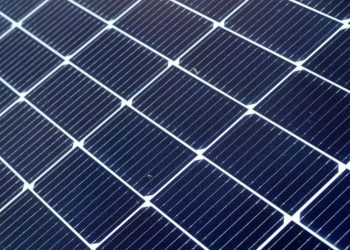The Port of Brisbane is Australia’s largest seaport, with over 2,600 ships passing through each year. Their expansive property has already achieved net zero with the aid of an 800 kW solar system that spans their carpark. Roshan caught up with Craig in episode 3 of Energy Matters to discuss how this solar farm not only covers the Port’s energy needs but also benefits its other sites thanks to Momentum Energy’s Virtual Solar Sharing.
About the episode
While visiting the International Cruise Terminal located at the Port of Brisbane, Roshan chatted with Craig, Head of Sustainability. The Port of Brisbane developed net zero goals in 2019 to achieve Scope 1 and 2 net zero emissions targets by 2030. The Port of Brisbane achieved its net zero goals in 2023 with 7 years up their sleeve and a little help from a whopping 800 kW solar system.
Taking advantage of the open air above the large carpark, the 800 kW solar system also serves as sun protection for the cars parked below. The system produces an average of 3,800 kWh of electricity per day. With a lot of excess energy going into the grid, the Port of Brisbane found a way to share the benefit of this excess energy with its other sites.






Nick Amon, Product Specialist for Momentum Energy, explained how Virtual Solar Sharing works. Businesses who have other sites that do not have access to physical solar panels can benefit from the electricity generated by solar panels located at another of its sites. By offsetting usage at one site with excess generation from the other, businesses can reduce their energy costs and make the most of their solar investments. The Port of Brisbane virtually shares its excess solar generation with a number of its other sites, further helping to reduce their carbon emissions.
Virtual Solar Sharing from Momentum Energy
Virtual Solar Sharing (VSS) with Momentum Energy offers businesses in Victoria, Queensland, South Australia, New South Wales, and the ACT a way to make the most of their solar energy generation by offsetting energy usage across multiple sites.
Here’s how it works:
- Smart meter data collection: VSS runs on data collected from smart meters at all your sites. This data is matched every thirty minutes, enabling real-time monitoring and management of your solar generation and usage.
- Offset excess solar: If you generate more solar energy than needed at one site, any excess solar is offset against grid energy consumption at other sites in the same network during the same 30-minute window. This reduces your overall electricity costs by converting surplus solar generation into bill credits at those sites.
- Grid energy consumption: Any additional energy needed from the grid is purchased at the rates outlined in your retail energy contract with Momentum Energy.
- Solar surplus to the grid: If your sites have all the solar they can use and there’s still excess energy, it’s sent back to the grid in exchange for a Feed-in Tariff, for a little extra financial upside.
With VSS, businesses can make the most of their solar, save on energy costs, and meet sustainability goals all in one process.
If you missed this episode, catch up via encore screenings on Sunday at 8am, Tuesday at 6:30am, and Thursday at 10:30am. Coming soon to 9Now.


















